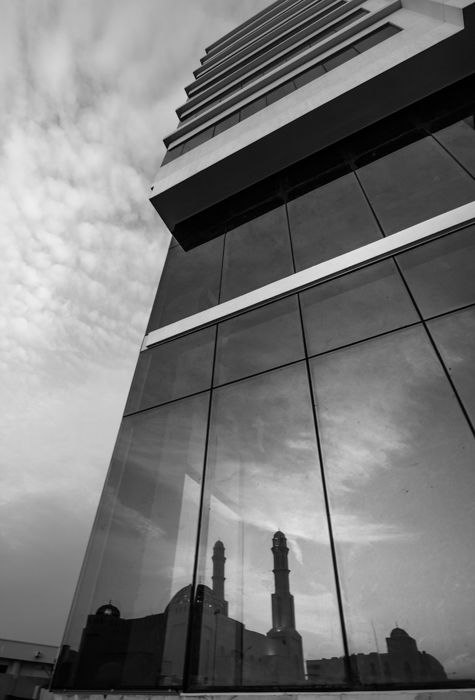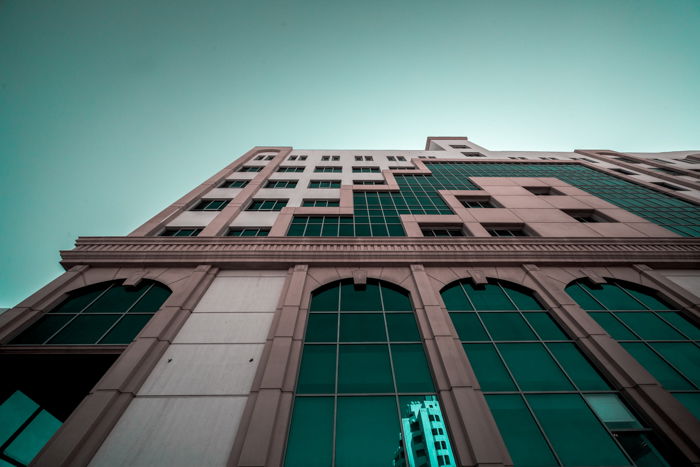When it comes to architecture photography, composition is key. A well-composed photo can make an ordinary building look extraordinary. But a poorly composed photo can make an amazing building look like a total disaster.
Luckily, with the right techniques and composition tools, you can make your architecture photos stand out from the crowd. Here are our top 10 tips for better architecture photography composition.
[courses category=”Architecture”]
It’s not a hard and fast rule. But, most architectural photography is shot with wide- or ultra-wide-angle lenses. The reason for this is that the context is often as important as the architecture itself. It gives the viewer clues about the setting and mood of the image.
A wide-angle lens will let you add a background element to your image. It tells the viewers what this architecture is all about and how it fits in its overall environment.

Simple architecture shots are often boring. It makes much more sense to include some point of interest in your image. And it’s even better if you use leading lines to direct the viewer’s attention toward it.
The lines don’t have to perfectly converge on your subject. You can simply use lines to direct the viewer’s attention in any direction you want.
In the photo below, I used the person as a point of interest. I made sure most lines converged toward him. without these leading lines, this picture would be a dull snapshot.

By its nature, most architecture photography is shot on a big scale. Emphasizing that sense of scale is a great way to create a more coherent picture.
Try to include a common element that’s often similar in size. It could be a human, a car, or even a tree. Your viewer will compare the size of the known subject to the architecture. This acts as a size reference, making your architecture shot appear bigger.
As a fun exercise, you can play with perspective to alter reality. Including a smaller element in your foreground can make the architectural element in the background seem smaller than it is.
I included a man walking in this image of a mosque to show how big the building is. If you imagine this photo without the human element, it’s much harder to tell the exact size. This technique is great for creating a sense of scale in outdoor architecture photography.

When photographing architecture, we tend to focus more on the bigger picture. And if that’s the composition you want, that’s great. But sometimes, it’s the tiny details that intrigue the most.
Whenever you shoot architecture, cover the whole building as a complete story. Start from the outside and cover the building and its surroundings. Then move on to specific sections and take close-up photos of all the details in the building.
This approach gives you lots of options to choose from when selecting your final images. Whether you are working for a client or on a personal project, try to cover every aspect you can find.
I happened to be at the Grand Mosque in Oman, which has beautiful architecture as a whole. But I found this chandelier to be incredible. And when I photographed the chandelier from a closer vantage point, it drew attention to the intricate details.

Look out for unique reflections in your frame. In general, reflections add a sense of symmetry and contrast to your image. Most modern buildings have a lot of glass on them. Try to look for reflections that either complement or create some juxtaposition.
If there isn’t any glass around, puddles of water or any shiny surface will work. Try to create something interesting to spice up a traditional architecture image.
In the picture below, I photographed a new urban building. But I also included a reflection of a traditional Islamic mosque to create juxtaposition.

Buildings with artificial lights look fascinating during blue hour. Blue hour is roughly 30 minutes before sunrise and after sunset.
This vibrant blue in the sky looks much more colorful in pictures and adds interest to your compositions.
Modern urban architecture is a great subject for blue-hour photography.

Sometimes an ultra-wide-angle lens isn’t enough to capture a complete scene or structure. This is where panoramas come in.
Panoramas look good with symmetric compositions in general. This technique exaggerates the whole environment. So try to put the most important part of your subject in the middle.
Since the middle of the photo is shot straight-on, it has the least distortion. The resulting image will be realistic while still allowing you to cover bigger subjects.
You can also experiment with vertical panoramas. Lightroom and Photoshop let you create one with ease. And the resulting file will be a RAW file, giving you complete control in post-processing.
Start with a 3- or 5-image panorama. Make sure to overlap at least 30% of each image to give your software enough room to create the correct panorama. Using a panoramic tripod will allow you to take perfect shots every time.

Your perspective has the biggest impact on your final image. Shooting from a different angle changes your entire composition.
You can create dynamic compositions by changing your shooting angle. Shooting straight-on tends to be a good angle. But you can also shoot from above or below your subject to make it more dynamic. You can try tilting your camera upwards to exaggerate height, for example.

Patterns and repetitions create a dynamic composition, especially in architecture photography. They add a sense of rhythm to your image.
The patterns are easy to find. If you are photographing urban buildings, then there are plenty of windows and floors. Use these to create repeating patterns. With old traditional architecture, you can use doors and archways.
The key is to stop looking at the building or structure as a whole. Instead, look for repeating patterns in smaller sections. You can almost always find beautiful patterns if you look close enough.

Places with exciting architecture are often filled with tourists. Sometimes it’s a bit distracting, but including people in your photos can bring more interest to your photos if done intentionally.
Adding humans to your composition makes it more authentic and natural. Your viewers will tend to relate to it better. It adds the element of scale to your composition and shows what’s going on around that architecture.
Try to include people only if you want to show movement within your photo. If there are too many people, try revisiting the site at a less crowded time.

Architecture photography is abundant and timeless in nature. You don’t have to travel to exotic places to find architectural sites. Traveling helps, of course. But you can still find beautiful architecture to photograph wherever you live.
Use the techniques in this article to bring new interest, compositions, and dynamism to your photos!

[courses category=”Architecture”]